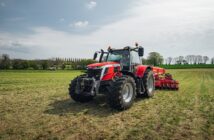Much more is now known about the fungus behind the soil-borne disease ‘take-all’, including fungal populations and genetics, thanks to a new Student Report.
AHDB invests around £1 million a year in doctoral research at UK universities, colleges and research institutes as part of its work to develop a new tranche of agricultural and horticultural scientific expertise.
The latest PhD project, by Sarah-Jane Osborne at Rothamsted Research, has advanced understanding of the disease, which is essential if non-chemical control options are to be developed.
Take-all, caused by a soil-borne fungus called Gaeumannomyces graminis var. tritici, is a challenge in wheat production across the world. It can also infect barley and rye crops.
At present, not enough is known about genetics to provide varietal solutions for the management of the disease. This PhD project looked, in part, to address this.
The take-all resistance status of wheat lines, with a range of susceptibility, was investigated under field conditions across two seasons. Disease observations were made and this information was used to improve a genetic map to help pinpoint the parts of the wheat genome responsible for resistance.
The ability of other fungi to compete with the take-all fungus was also investigated as part of the PhD. Soil contains a myriad of fungal species, some of these are closely related to the take-all fungus but do not cause disease in wheat crops. As many of these live on wheat roots, they are likely to compete with the take-all fungus and they could be harnessed potentially to suppress the disease.
The studentship looked at winter wheat varieties on the AHDB Recommended List (RL) and how the natural competitor fungi built up in the field.
Samples of the fungi were taken and the genetic makeup of three competitor fungal species was studied. Each species was found to have its own unique genetic makeup, meaning they are likely to supress take-all in different ways.
These preliminary findings can now be used to better understand the competitor species and may lead to novel control options in the future.
The full final report for this studentship, plus others funded by AHDB Cereals & Oilseeds, can be found at cereals.ahdb.org.uk/phd




